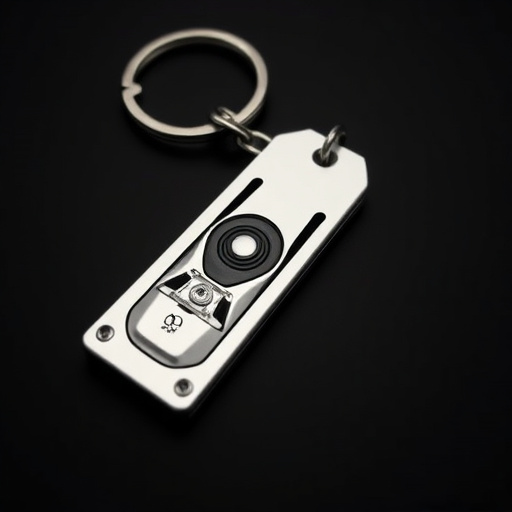Understanding and adhering to local Legal Self Defense Keychain Regulations is crucial for carrying a panic alert system keychain. These regulations vary across jurisdictions, impacting what's legal. Compliance involves researching usage limits, power output, activation methods, and notifications to avoid legal issues while ensuring personal safety. Effective keychains include high-decibel alarms, GPS tracking, sensitive activation, and real-time monitoring. Staying informed on regulations is vital for users and manufacturers alike.
Staying safe is a top priority, especially with personal defense tools like defensive keychains gaining popularity. This comprehensive guide explores the world of legal self-defense keychain regulations, shedding light on how these compact devices can offer peace of mind. We’ll delve into the components of an effective panic alert system, navigate potential legal implications, and provide best practices for carrying a defensive keychain responsibly. Understanding these aspects is crucial to ensuring both personal safety and compliance with legal requirements.
- Understanding Legal Self-Defense Keychain Regulations
- Components of an Effective Panic Alert System
- Potential Legal Implications and Compliance Guidelines
- Best Practices for Carrying a Defensive Keychain
Understanding Legal Self-Defense Keychain Regulations
When considering a defensive keychain with a panic alert system, it’s crucial to understand the Legal Self-Defense Keychain Regulations in your region. These regulations vary significantly from one jurisdiction to another, and what may be legal in one place could be restricted or illegal elsewhere. For instance, some regions have strict guidelines on the type of self-defense devices allowed, their power output, and the circumstances under which they can be used.
It’s essential to research and comply with local laws to avoid legal consequences. This includes understanding when and where you can use a panic alert system keychain, how it can be activated, and any required notifications or permits. Staying informed about Legal Self-Defense Keychain Regulations ensures that your possession and use of such a device are not only effective for personal safety but also legally sound.
Components of an Effective Panic Alert System
An effective panic alert system within a defensive keychain should incorporate several key components. Firstly, a reliable and loud alarm mechanism is crucial, ensuring that the alert can be heard above ambient noise during moments of distress. This often involves a high-decibel siren or a vibration feature to grab immediate attention. Secondly, GPS tracking is a game-changer, allowing users to pinpoint their location in case of an emergency, which is vital for swift response times from emergency services.
Additionally, the system must adhere to Legal Self Defense Keychain Regulations, ensuring it operates within legal boundaries and doesn’t cause false alarms that could lead to unnecessary consequences. This includes sensitive activation mechanisms, such as a quick-trigger button or motion sensors with advanced algorithms to prevent accidental activation. The panic alert should also be connected to a central monitoring system for real-time updates, providing users and authorities with crucial data during crises.
Potential Legal Implications and Compliance Guidelines
The introduction of a defensive keychain with a panic alert system raises several important legal considerations, especially regarding self-defense and personal safety devices. In many jurisdictions, laws surrounding self-defense tools are stringent, and manufacturers must adhere to specific regulations to ensure their products’ legality. These regulations often dictate the functionality, design, and accessibility of such devices, aiming to balance individual rights with public safety. For instance, some regions may require that personal alarm systems have specific decibel levels or activation mechanisms to comply with local Self Defense Keychain Regulations.
Compliance guidelines are crucial for both manufacturers and users to navigate the legal landscape. They ensure that these defensive keychains do not infringe upon privacy rights or become instruments of harmful behavior. It is essential for producers to stay updated on Local and National regulations, obtaining any necessary licenses or certifications to sell their products. Users should also be educated about the legal implications of carrying such devices, understanding their rights and responsibilities in different settings. By staying informed and adhering to the law, individuals can leverage these tools effectively while mitigating potential Legal Self Defense Keychain Regulations issues.
Best Practices for Carrying a Defensive Keychain
When carrying a defensive keychain with a panic alert system, it’s crucial to be aware of local legal self-defense keychain regulations. Different regions have varying laws regarding personal defense tools, so understanding your rights and responsibilities is essential. Familiarize yourself with the permitted use and storage of such devices to ensure you remain within legal boundaries.
Best practices include keeping the keychain readily accessible but discretely hidden. Avoid drawing attention to it in public spaces. Regularly test the panic alert system to ensure its functionality, ensuring you know how to activate it quickly during an emergency. Additionally, stay informed about any legal self-defense keychain regulations updates or changes, as they may impact your ability to carry and use such a device for personal safety.
A defensive keychain with a panic alert system can be a powerful tool for personal safety, but it’s crucial to understand the legal implications and best practices surrounding its use. By adhering to local regulations on self-defense keychains, ensuring your device has reliable components and features, and following safe carrying habits, you can leverage this innovative tool responsibly. Remember, knowledge is defense, so stay informed about Legal Self Defense Keychain Regulations for peace of mind in an uncertain world.
